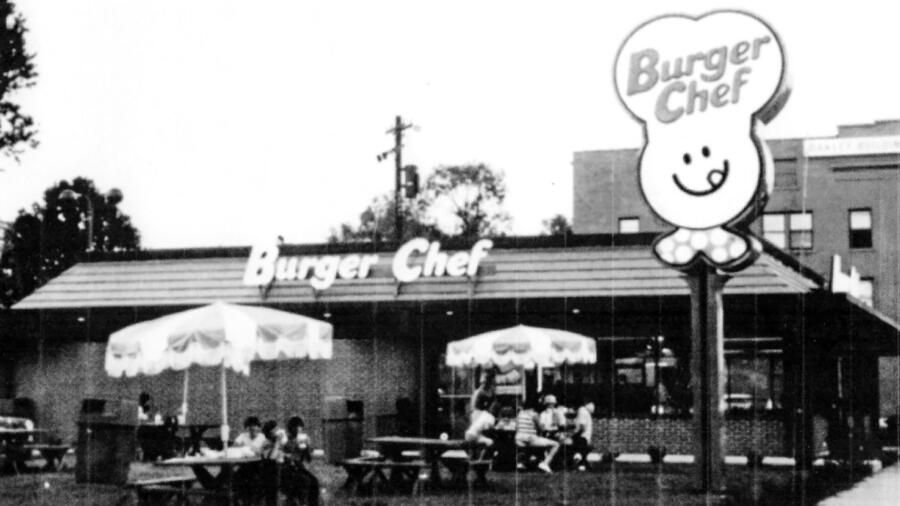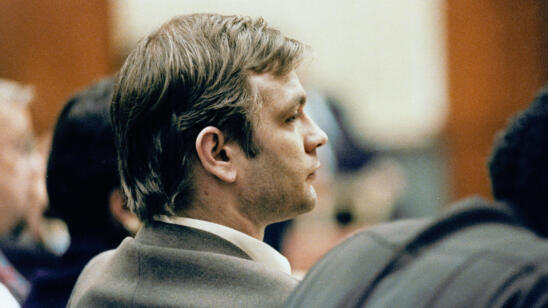Just after midnight on November 17, 1978, a teenage boy pulled into the parking lot of the Burger Chef where he worked in Speedway, Indiana. The lights were on, so he figured his coworkers were still inside cleaning up. Deciding to pay them a visit, he walked up to the back door and noticed it was open, which was odd. When he entered, he realized the store was empty and the cash-register drawers were on the floor.
Two days later, the four young people who should’ve been closing up that night were found dead in a neighboring county. More than 40 years later, what happened remains a total mystery.
After the teenager who discovered the scene called the police, the store manager came in and determined that $581 in cash was missing. Still, the police didn’t assume the employees had been robbed and kidnapped. At first, they thought the four young people working that night—16-year-olds Daniel Davis and Mark Flemmonds, 17-year-old Ruth Ellen Shelton and 20-year-old Assistant Manager Jayne Friedt—might’ve taken the money themselves and gone for a joy ride.
“Everybody was kind of just waiting around for the kids to come back and explain themselves,” says Julie Young, author of the new book, The Burger Chef Murders in Indiana.
The theory that the employees had gone for a joy ride didn’t really make sense, since Shelton and Friedt’s jackets and purses were still at the store. The manager also thought it was very out-of-character for these fairly responsible employees to steal the money, let alone leave the store with the back door open and the lights still on. When the police called the employees’ parents and discovered none of them had come home that night, they started to suspect a kidnapping.
Yet even then, police made some crucial errors that may have permanently derailed the investigation. As Buddy Ellwanger, a Speedway police officer who worked on the case, later put it, “we screwed it up from the beginning.”
“When the morning crew came in to start work for the day, the police let them clean up the restaurant,” Young says. “And they did it before [the police] took photos. So if there was any evidence at the scene, it was gone.”
Investigators didn’t locate the missing employees until late Sunday afternoon, when an elderly couple in neighboring Johnson County called to report they’d found four dead bodies while walking through their large, heavily wooded property. The location of the bodies was about a 35-minute drive away from the original crime scene, and it only made the whole case more mysterious.
It already seemed strange that the kidnappers (police suspected there was more than one) had taken $581 in cash but left $100 in coins and the two girls’ purses in the store. Now, investigators found money and a watch on the victims’ bodies—both things the kidnappers could’ve taken if financial gain was their main motivation for the crime.
There also didn’t seem to be a clear reason why someone would want to murder one or all of these young people. Indeed, the fact that the kidnappers had murdered them in three different ways seemed to suggest they hadn’t planned on murdering anyone in the first place. The kidnappers had shot Davis and Shelton multiple times in the head, neck and shoulders, and stabbed Friedt twice in the heart with a hunting knife whose handle had broken off and was now missing.
What happened to Flemmonds was a little harder to figure out. “There were contusions on his face, but that’s not what killed him,” Young says. “He died of asphyxiation; he choked on his own blood.” One theory was that Flemmonds had escaped from the kidnappers and accidentally knocked himself out by running into a tree. Another was that the kidnappers had beat him and he fell down in the woods from his injuries and died. “But bottom line is, if he would’ve fallen any other way, it’s possible they would’ve had a living witness,” she says.
Investigators wondered if the kidnappers had only meant to rob the store and had taken the employees hostage when one recognized them. Because Flemmonds was covering another employee’s shift that night, investigators speculated the kidnappers hadn’t planned on him being there, and he was the one who recognized them. This could explain why the kidnappers singled him out to beat him, if that’s what happened. Flemmonds was also the only Black employee working that night (the three others were white), but the police didn’t investigate this as a racially motivated crime.
This second crime scene had the potential to provide DNA and other evidence that was no longer possible to collect at the restaurant. Yet once again, investigators compromised it.
“As various departments converged on the site, some drove through areas that should have been sealed off,” Young writes in her book. “There were rumors that one of the bodies was moved before the coroner or evidence technician arrived at the scene.” In addition, Officer Ellwanger—the one who later admitted “we screwed it up from the beginning”—accidentally took two pieces of identification found on a body home with him in his coat pocket and didn’t realize it until a few weeks after the murders.
“That investigation could be used as an example of what not to do,” reflected state police investigator Brook Appleby to Indiana’s Daily Journal in 1988, after he retired. “There were mistakes made by all departments involved.”
Though the police pursued many leads over the next few decades, they were never able to successfully prosecute anyone for the robbery and murders. In an effort to bring attention to the case, police released an image of the knife blade used to kill Friedt on November 14, 2018, ahead of the murders’ 40th anniversary. Since the police never located the broken handle, they are hoping the image of the blade will jog someone’s memory all these years later.
“Indiana State Police investigators are continuing to actively investigate this crime and to follow up on all tips and information provided to them,” said the Indiana State Police in a statement provided to A&E True Crime. “We continue to ask anyone with any information at all to contact our investigators at (317) 899-8510 or Crime Stoppers of Central Indiana at (317) 232-TIPS (8477).”
Related Features:
The Austin Yogurt Shop Murders Cold Case: Revisiting the Scene of the Crime More Than 25 Years Later
The ‘Boy in the Box’: Will 2019 Be the Year We Get Answers About the Famous Unsolved Murder?
The Cold Case Murders That Keep Retired Detectives Up at Night



